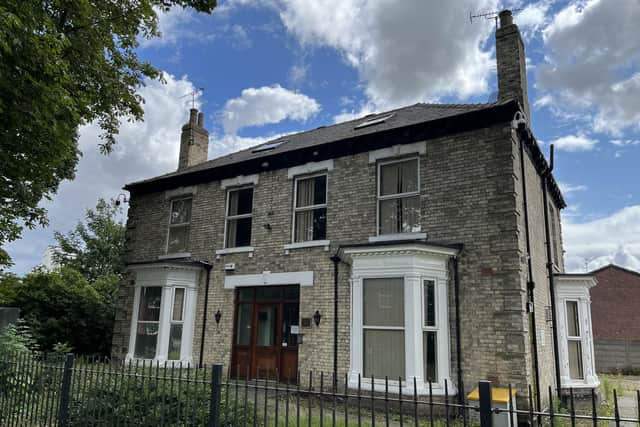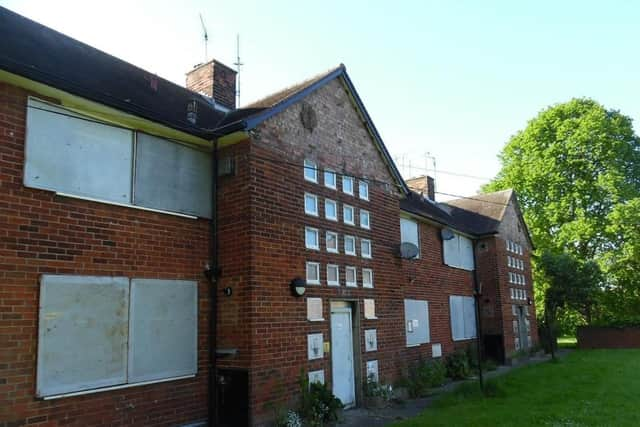Heritage in Hull: Bid to protect two historic buildings in Yorkshire could stop one being demolished
Applications have been lodged to put Henson Villas next to Hull’s Pearson Park and John Symons House near Spring Bank on the Local Heritage List of historically significant buildings.
Hull City Council’s Planning Committee voted to put John Symons House, in Park Row, on the List after an application lodged to convert it into a house of multiple occupation (HMO).
Advertisement
Hide AdAdvertisement
Hide AdCouncillors also agreed to launch a consultation on the bid to list Henson Villas which is under threat from demolition as the number of residents there dwindles.
The Local Heritage List features almost 220 historic buildings from across Hull, details their condition and warns if they are at risk.
It is reviewed twice a year and people can nominate buildings and sites to be included on it while councillors also decide whether to remove some listings.
Hull General Cemetery in Spring Bank, The Gardener’s Arms in Cottingham Road and a former railway depot in Neptune Street near Hessle Road were among the latest additions in May.
Advertisement
Hide AdAdvertisement
Hide AdBuildings on the register do not have the same level of legal protection that those listed with Historic England do.


But if they are included councillors are required to take their status into account if they are subject to planning applications.
The Planning Committee heard on Wednesday (November 22) that the demolition of a building on the List would be considered to cause substantive harm to an area.
Henson Villas
Henson Villas are three blocks of eight flats each in Pearson Park, the road around the park of the same name. They were named after Alderman John Henson, the then Lord Mayor of Hull. They were designed in 1949 in a style dubbed the ‘Festival of Britain’ after the 1950s event which showcased the nation’s culture after the war.


Advertisement
Hide AdAdvertisement
Hide AdThe buildings were made up of a total of 20 flats and were offered to single women working in business. Heating systems in the buildings were designed to account for the women being out at work during the day. It was unusual to build council housing solely for single women at that time, with families being the priority.
But the need for workers in Hull while the city was still economically recovering from the Second World War led to them being built. It was felt that women coming to work in Hull would need to live close to the city centre because of a lack of public transport links with nearby villages.
Although their doors and windows have been replaced the retain many of their original features including ground floor verandas and upper floor balconies. The council still owns the flats but their future remains uncertain.
Senior councillors considered demolishing them in 2022, a move which then Housing Portfolio Holder Coun John Black said was common sense.
Advertisement
Hide AdAdvertisement
Hide AdMost of the flats are now empty or have become plagued by drug-taking and antisocial behaviour, with one subject to a closure order and shut down as a result. But two flats are still occupied, with one woman who moved in in the 1980s telling Hull Live she was desperate to stay.
The 20th Century Society which advocates for buildings of the period also called on the council to stop them from being demolished because of their distinct style. A report on the nomination for the listing stated that the flats remain under threat from demolition though no application to tear them down has been submitted.
The report stated: “The empty blocks have already suffered from features such as cladding being removed. Flues have also been removed, leaving holes in the roofs, a decision regarding their suitability for the Local List is there required urgently.”
Councillors agreed to consult local interest groups such as the Pearson Park Trust and residents’ associations before deciding whether to add it to the list.
John Symons House
Advertisement
Hide AdAdvertisement
Hide AdPark Row’s John Symons House was built in 1862. The Victorian villa was constucted by John Symons, the first Jewish person to hold public office in Hull. He served as guardian of the poor in 1857, alderman in 1875 and sheriff in 1890 and also wrote a book about local history, according to its List nomination.
It later served as a doctor’s surgery and it is thought to be the last building of its kind in Park Row. The report stated the building had also previously been at risk of demolition, with an application to tear it down approved though this had not been followed through on.
The report stated: “The building is considered as being of historic interest to the city of Hull. It has architectural interest as been a surviving 19th Century villa, within an area which has been cleared of much of its 19th Century development.”
Councillors rejected plans to turn it into a 32-bed HMO in July after planning officers said a proposed extension on the building would be a poor fit. They also recommended that it be added to the Local Heritage List.
Advertisement
Hide AdAdvertisement
Hide AdBut applicants Townglow Ltd stated the only way to stop the building falling into disrepair was to find a viable use for it. A scaled-back application for 23 bedrooms has since been lodged and is pending decision.